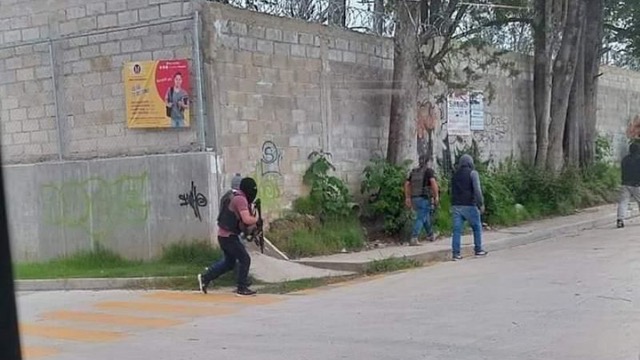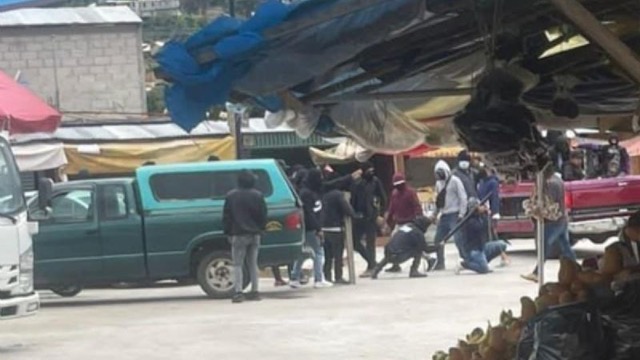
By: R. Aída Hernández Castillo*
Last June 14, heavily armed indigenous youth took over the popular market of San Cristóbal de las Casas, Chiapas, and maintained control of the northern zone of the city for more than three hours, stealing, burning vehicles and terrorizing the population, without the various security forces doing anything to stop them. The press and the social networks explain these actions as the confrontation between several criminal groups over control of the market, mentioning the Motonetos, the Vans and the San Juan Chamula cartel as some of the groups confronted in these fights over territorial control. The images that circulate in the social networks are those of young men with high-power weapons circulating freely through the streets. The “Coletos” fears of the indigenous occupation of their city and racist imaginaries are expressed by emphasizing the indigenous identity of the aggressors and their capacity for violence.
A taboo theme among anthropologists is revealed in these images: organized crime has infiltrated the indigenous communities, physically or culturally kidnapping their youth. Tsotsil, Tseltal, Mayo-Yoreme, Yaqui, Me’phaas, Mixteco, Rarámuri and Purépecha men, forced or seduced by narco-cultures, are being recruited by the cartels. That these acts had wide media coverage was due to tourism and political and cultural importance of San Cristóbal. However, similar incidents are happening in different indigenous territories of the country, without press or academia denouncing the profound impacts that these processes are having on community fabrics.

The risks involved in doing research in territories controlled by organized crime, coupled with the fear of contributing from our academic work to the criminalization of the first peoples, has influenced the fact that few researchers take on the task of documenting and analyzing the cultural and political transformations that drug trafficking networks have brought to the indigenous communities. An elderly Mayo-Yoreme man, whose grandson was disappeared and murdered in a community taken over by drug traffickers, described to me these transformations this way: “About 10 years ago, things began to break down, when coca entered [the community] and then crack. Then they started to insert drugs into the schools, miasmas that leave the boys blind, deaf, crazy. They started to work with the government and to kidnap (levantar) the boys, many never returned and some returned crazy. They return addicts so that that they will work for them and when they are no longer useful to them, they kill them.”
We are facing a new manifestation of colonial violence that dispossesses them of their lands, desecrates their sacred spaces, forces them to move and kidnaps their sons and daughters. Now the “enemy” is inside their own homes, speaks their own language and has the knowledge to dismantle community power structures, making resistance increasingly difficult.
In many regions, such as Chiapas, the cacique political powers have armed these groups and used them to control and terrorize their opponents; in others they are hired by business groups to impose megaprojects, intimidating and, if necessary, murdering those who oppose the dispossession and plundering. The most worrisome is that they are creating new indigenous masculinities willing to kill or be killed for a nickname, an automobile or a cell phone. Behind many of these young assassins there are terrorized indigenous women, with little possibility of denouncing or breaking away from violent relationships. Femicide, trafficking and disappearances of indigenous women have increased exponentially, without gender alerts that recognize the specificity of their contexts of vulnerability.
It is urgent to document and denounce this ethnocidal violence, accompanying the efforts of indigenous organizations to protect and recover their young people. Silencing these processes not only doesn’t contribute to finding solutions, but it also makes us complicit in the impunity and indifference that has allowed the kidnapping of indigenous youth.
* Doctor in anthropology, researcher at Ciesas
Originally Published in Spanish by La Jornada, Sunday, June 19, 2022, https://www.jornada.com.mx/2022/06/19/opinion/012a2pol. English interpretation by the Chiapas Support Committee. Re-posted by Schools for Chiapas.
